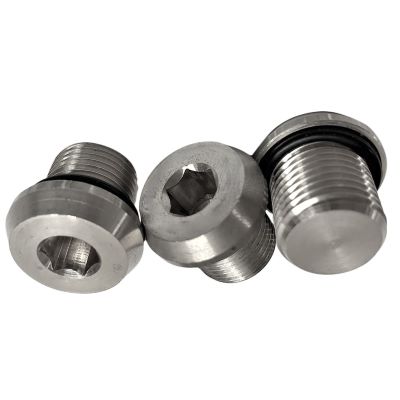Blind plugs, often overlooked yet crucial components in piping systems, serve as the guardians of pipelines, ensuring their integrity and functionality.
In this article, we delve into the realm of blind plugs, exploring their significance in pipe protection and shedding light on their types, applications, benefits, and installation processes.
What are Blind Plugs?
Blind plugs, also known as pipe plugs or pipe caps, are devices used to seal the end of a pipe temporarily or permanently. They are designed to prevent the ingress of foreign materials, such as dirt, debris, or contaminants, into the pipeline, safeguarding its internal environment and preserving its operational efficiency.
Importance of Pipe Protection
Pipe protection is paramount in various industries, including plumbing, manufacturing, and automotive sectors. Unprotected pipes are vulnerable to damage, corrosion, and contamination, which can compromise their structural integrity and functionality.
Blind plugs offer a simple yet effective solution to mitigate these risks, ensuring the longevity and reliability of piping systems.
Types of Blind Plugs
Blind plugs come in various types and configurations to suit different applications and requirements. The three primary types of blind plugs include:
➡️ Threaded Blind Plugs
➡ Threaded blind plugs feature external threads that allow them to be screwed securely into the end of a pipe, creating a tight seal. They are commonly used in plumbing systems and industrial pipelines where temporary closure is needed.
➡️ Mechanical Blind Plugs
➡ Mechanical blind plugs utilize mechanical mechanisms, such as expanding rubber gaskets or compression fittings, to create a seal within the pipe. These plugs offer a more secure and permanent closure solution and are often used in applications requiring long-term pipe isolation.
➡️ Expansion Blind Plugs
➡ Expansion blind plugs employ inflatable seals or expandable sleeves that expand upon insertion into the pipe, creating a tight seal against the inner walls. They are ideal for sealing pipes of varying sizes or irregular shapes and are commonly used in pipeline maintenance and repair activities.
Applications
Blind plugs find extensive applications across diverse industries and sectors, including:
➡️ Plumbing Systems
➡ In plumbing systems, blind plugs are used to seal off unused pipe openings during construction or repair works, preventing debris ingress and maintaining system integrity.
➡️ Industrial Pipelines
➡ In industrial settings, blind plugs are employed to isolate sections of pipelines for maintenance, inspection, or repair, ensuring operational continuity and safety.
➡️ Automotive Industry
➡ In the automotive industry, blind plugs are utilized in engine blocks and cooling systems to seal off unused ports or openings, preventing leaks and contamination.
Benefits of Blind Plugs
Blind plugs offer several benefits for pipe protection and maintenance, including:
➡️ Preventing Contamination
➡ Blind plugs seal off pipe openings. They stop dirt, debris, or contaminants from getting into the pipeline. This keeps the quality of transported fluids high and reduces the risk of system contamination.
➡️ Safety Enhancement
➡ Blind plugs enhance safety. They isolate pipeline sections during maintenance or repair. This cuts the risk of spills, leaks, or injuries from pressurized fluids.
➡️ Cost-Effective Solution
➡ Blind plugs are cheap for closing pipes, either temporarily or permanently. They replace the need for complex and expensive options. And, they ensure efficient pipeline management.
How to Choose the Right Blind Plug
Picking the right blind plug for your application requires thought about many factors. These include:
➡️ Material Considerations
➡ Choose blind plugs made from materials that work with your pipeline’s fluids and conditions. Options include PVC, stainless steel, and rubber.
➡️ Size and Compatibility
➡ Check that the plug fits the pipe. Also, consider factors like pressure and temperature. They are key for a secure seal.
Installation Process
Installing blind plugs is a straightforward process that involves the following steps:
➡️ Preparing the Pipe
➡ Clean the pipe opening thoroughly to remove any debris or contaminants that may interfere with the sealing process.
➡️ Inserting the Blind Plug
➡ Insert the blind plug into the pipe opening, ensuring proper alignment and fitment.
➡️ Securing the Plug
➡ For threaded blind plugs, use a wrench to tighten the plug securely into place. For mechanical or expansion plugs, follow the maker’s instructions. They cover proper installation and sealing.
Maintenance Tips
To ensure the continued effectiveness of blind plugs, follow these maintenance tips:
➡️ Regular Inspection
➡ Check blind plugs for wear, damage, or deterioration. Replace them as needed. This will keep performance at its best.
➡️ Replacement Schedule
➡ Set a replacement schedule for blind plugs. Base it on usage, the environment, and maker recommendations. This will prevent surprise failures or leaks.
FAQs (Frequently Asked Questions)
How do blind plugs work?
Blind plugs create a tight seal at the end of a pipe, preventing the ingress of foreign materials and maintaining system integrity.
Are there different sizes available?
Yes, blind plugs come in various sizes to accommodate different pipe diameters and applications.
Can blind plugs be reused?
Some blind plugs are for single use. Others can be reused many times. This depends on how they are made and their condition.
What materials are blind plugs made of?
Blind plugs are usually made from materials like PVC, stainless steel, rubber, or brass. They are chosen for their ability to work with different fluids and conditions.
Are blind plugs suitable for high-pressure systems?
Yes, there are blind plugs for high-pressure environments. They are designed to seal well and keep the system reliable.
Conclusion
Blind plugs are vital for pipe protection. They offer a simple but effective way to seal pipe openings. They also safeguard pipes from contamination, leaks, and damage.
Understanding the types of blind plugs, their uses, benefits, and how to install them will keep your pipes strong and long-lasting.
Post time: Apr-12-2024


